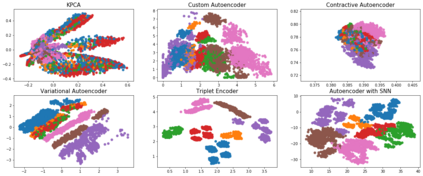Cloud data analytics has become an integral part of enterprise business operations for data-driven insight discovery. Performance modeling of cloud data analytics is crucial for performance tuning and other critical operations in the cloud. Traditional modeling techniques fail to adapt to the high degree of diversity in workloads and system behaviors in this domain. In this paper, we bring recent Deep Learning techniques to bear on the process of automated performance modeling of cloud data analytics, with a focus on Spark data analytics as representative workloads. At the core of our work is the notion of learning workload embeddings (with a set of desired properties) to represent fundamental computational characteristics of different jobs, which enable performance prediction when used together with job configurations that control resource allocation and other system knobs. Our work provides an in-depth study of different modeling choices that suit our requirements. Results of extensive experiments reveal the strengths and limitations of different modeling methods, as well as superior performance of our best performing method over a state-of-the-art modeling tool for cloud analytics.
翻译:云层数据分析器已成为企业业务活动中数据驱动洞察发现的一个有机组成部分。云层数据分析器的性能模型化对于在云层中进行性能调适和其他关键操作至关重要。传统的模型化技术无法适应这一领域工作量和系统行为高度多样性。在本文中,我们带来了最近的深学习技术,用于云层数据分析器自动性能模型化过程,重点是将闪烁数据分析器作为代表性工作量。我们工作的核心是学习工作量嵌入(有一套预期特性)的概念,以代表不同工作的基本计算特征,从而能够在与控制资源分配和其他系统 knobs 的工作配置一起使用时进行性能预测。我们的工作对适合我们要求的不同模型选择进行了深入的研究。广泛的实验结果揭示了不同模型方法的优点和局限性,以及我们最佳表现方法优于云层分析的状态模型工具。







